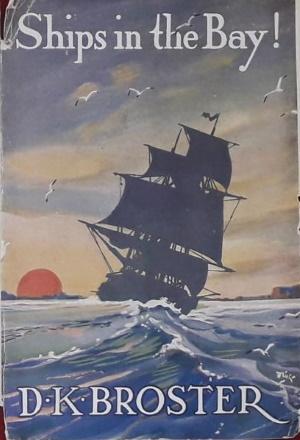Book review by George S. Ships in the Bay! is a historical romance set during the French revolutionary wars. In 1796 there was an abortive French attempt to invade Ireland, and in 1798 a small and soon-foiled invasion at the Welsh town of Fishguard. Ships in the Bay! is based on the unwilling involvement in these two events of a young Englishman called Martin Tyrell.

We first see Tyrell through the eyes of Nest Mortimer, the twenty-year-old daughter of the Precentor of St David’s cathedral. He is dressed as a sailor, and obviously on the run. When her dog bites him, she feels under an obligation to him, and so becomes involved in his adventures.
He tells her the story of how he got into trouble. His sister is married to an Irishman who has sympathy for the anti-English rebels. Fearing that he will become involved in treasonous activities, she begs Martin to go and find him. Martin’s travels to Ireland and Hamburg are noticed by the authorities, and he becomes a wanted man. While seeking refuge, he is shanghaied by a privateer and forced to work as a sailor. It’s when he has made his escape from the ship that he meets Nest. She helps him, and he finds sanctuary with a Mr Salt, an eccentric scholar. Then his troubles really begin.
Nest is a rather attractive character. She has had a sheltered life, and follows a strict morality, feeling pangs of conscience when intrigue makes her tell small lies to her father. As the novel progresses, she develops in independence. Martin is honorable to the point of absurdity, always putting himself in danger for the sake of others. It is clear from the start of the novel that these two are made for each other, though it takes them a long while to realize it.
The book has a classic thriller structure – Tyrell is in danger both from the enemies of the nation, and from the police. Itis full of daring risks and near-escapes, and coincidences abound – especially when Tyrell just happens to be in just the right place at exactly the time when he can rescue Nest from a fate worse than death at the hands of lascivious Frenchmen. Good fortune also seems to be directing the appearances of a Royalist Frenchman, Monsieur de la Vireville, a one-armed hero whose adventures had apparently featured in an earlier Broster novel, Sir Isumbras at the Ford. Whenever Tyrell is in deep trouble, De la Vireville turns up like a deus ex machina to help him.
I gather that some other Broster novels are more nuanced in their portrayal of heroes and villains, but this one is very stereotyped. Its politics are cosily conservative. Irish revolutionaries are all either unprincipled schemers or gullible fools. The French revolutionaries are (in contrast with the dashing and heroic Royalist) uniformly vile. While a student, Martin Tyrell had been excited by the ideals of the French revolution, and this is referred to as ‘that extremely foolish revolutionary phase of his at Oxford’. In historical novels of the twenties I always take it take it that the novelist is using the French revolution to talk about the Russian one, and that in this case Broster is very firmly expressing her distaste both for left-wing ideas, and for Irish nationalism. There is nothing here to disturb conventional English middle-class prejudices about radicalism or Irish nationalism.
Otherwise, much of the writing is lively and interesting. I enjoyed the asides that gave us a bit of local colour, like this one:
Not indeed that there was silence in the great church, since it was the custom to use the lower part of the nave, between the north and south doors, as a thoroughfare, and on Sundays the dogs of the congregation were assembled there during service under the charge of a man with a whip.
Broster is very good indeed at bringing the Welsh landscape to life, and seems especially interested in flowers; there are paragraphs like this:
Last time she had been here, in June, the grassy bank which accompanied her had been one long nodding line of pink thrift; but now it was clothed in some places with the gold of lady’s bedstraw, in others with the heaven-blue of the smaller scabious; and the ground at its foot was carpeted with the purple of the wild thyme. No wonder that the air was scented!
The narrative is pacey enough, and the two main characters are engaging, despite their slowness to recognize that they are made for each other. I quite enjoyed the book, but am not in a hurry to read another Broster.
